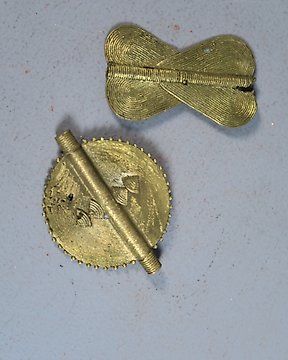
(Sem preço de reserva)
N.º 83430159

N.º 83430159

An Akan Terracotta fragmented head, Ghana, placed on a plinth, the delicate trace of a half opened mouth, nose, two eyes, ears, and what would have been an elaborated hairdo; cracks, signs of use. Certificate of provenance.
"In much of Africa, clay is an artistic medium primarily associated with women. European visitors to this region in the mid-nineteenth century documented a related Akan tradition of lifesize funerary sculpture crafted by female artists. Although earlier accounts did not identify the producers of these smaller memorial heads, it is probable that they were created by female sculptors as well." Source: The MET
An Akan cemetary with numerous terracotta heads (last photo sequence).
These burial sites existed until the 1950s. Despite its stylization, each head was the image of a deceased person. But as soon as the art trade discovered the aesthetic value of these heads, these heads disappeared overnight. In a few months, these Akan cemeteries no longer existed. What has been preserved is the beauty of these heads, which now finds its place in many Western collections. Although stolen, restitution is hardly possible because, like the Kota figures from Zaire, their overall context can hardly be restored. The Ashanti now keep the heads of their deceased in their homes on memorial altars. Photos like this one, which I found on the Internet a few years ago, hardly exist anymore because - as is so often the case - ethnological research came too late. Since original terracotta heads are hardly available anymore, copies are now made and sold as old. But they differ significantly from specimens that are now around 80 years old and older. A dilemma that can hardly be solved and where “simple solutions” hardly help. wj
Como comprar na Catawiki
1. Descubra algo especial
2. Faça a licitação vencedora
3. Faça um pagamento seguro